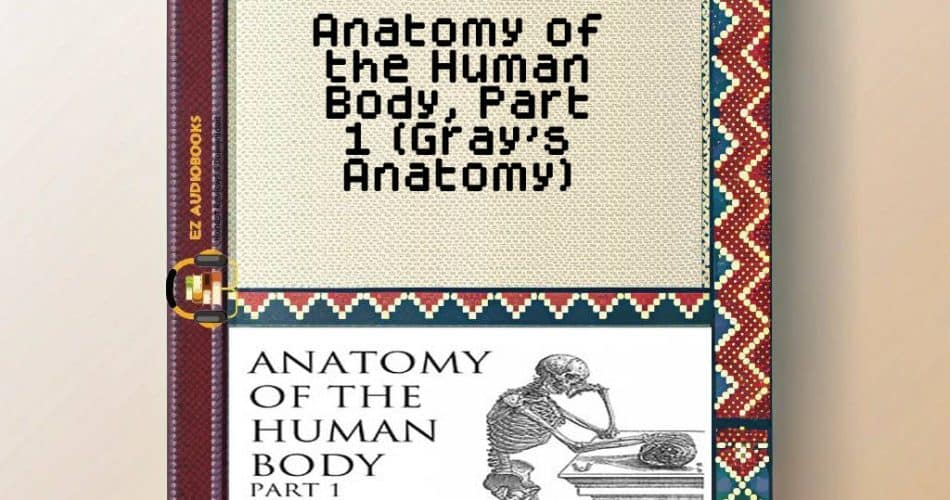Audiobook Sample
Listen to the sample to experience the story.
Please wait while we verify your browser...
- Title: Anatomy of the Human Body, Part 1 (Gray’s Anatomy)
- Author: Henry Gray
- Narrator: LibriVox Volunteers
- Length: 11:57:15
- Version: Abridged
- Release Date: 01/01/2016
- Publisher: LibriVox
- Genre: Science & Technology, Medicine
- ISBN13: SABLIB9782061
Through a cultural lens, I find myself drawn to the intricate tapestry of human understanding woven into Henry Gray’s “Anatomy of the Human Body, Part 1 (Gray’s Anatomy)”, a foundational text that has shaped medical education since its debut in 1858. This audiobook, narrated by the dedicated LibriVox Volunteers and freely available through platforms like LibriVox, offers an accessible entry into the Embryology and Osteology sections of the 1918 US edition. As a literature professor with a penchant for dissecting narratives – whether literary or scientific – I approached this listening experience with intellectual curiosity, eager to uncover how a 19th-century medical classic translates into the spoken word in 2025.
What fascinates me most is how this audiobook bridges the historical and the contemporary, much like the cross-cultural narratives I’ve spent my career analyzing. My initial impression was one of awe at the sheer ambition of Gray’s work – detailing the development of life from embryo to skeletal structure with a precision that feels almost literary in its clarity. This reminds me of when I taught a seminar at Berkeley on how different mediums affect storytelling. We once dissected “Cloud Atlas” across its book, ebook, and audiobook forms, marveling at how each format reshaped our engagement with the narrative. Similarly, listening to “Gray’s Anatomy” rather than poring over its famed illustrations (available online at bartleby.com) transforms it into a narrative journey – one where the human body becomes a story told through time.
The content itself is a marvel of pedagogical effectiveness. The Embryology section traces the miracle of human development, from the first spark of cellular division to the formation of a nascent being, while Osteology meticulously catalogs the bones that scaffold our existence. Gray’s language, though rooted in Victorian science, carries a timeless quality – accessible yet authoritative, a balance I strive for in my own academic writing. As someone who’s lectured on the technological impact of storytelling, I appreciate how this free audiobook experience democratizes access to such knowledge, echoing the digital humanities ethos I champion in my work.
Yet, the audiobook’s strength lies not just in its content but in its delivery. The LibriVox Volunteers bring a commendable earnestness to the narration, their varied voices lending a communal feel to the project. There’s a raw authenticity here – unpolished compared to professional narrators, perhaps, but rich with dedication. The audio quality, while clear, reflects the constraints of a volunteer-driven effort: occasional inconsistencies in pacing or pronunciation remind us of its public-domain roots. Still, this imperfection adds charm, much like the unrefined beauty of a handwritten manuscript. For a text as dense as “Gray’s Anatomy”, the listening experience benefits from this human touch, though I found myself pausing often to reflect on the scientific detail – something less necessary with a visual text.
This audiobook resonates personally, too. During my year as a visiting professor in Tokyo, I recall dissecting Haruki Murakami’s “Kafka on the Shore” in both English and Japanese, struck by how language shaped my perception of its magical realism. Listening to “Gray’s Anatomy”, I experienced a similar revelation: the spoken word imbues these scientific descriptions with a rhythm that feels almost poetic, a cadence that might be lost in silent reading. It’s a reminder of how format influences comprehension – a theme I’ve explored from Berkeley to TEDx stages.
Analytically, “Gray’s Anatomy” stands as a monument to clarity and precision, its influence stretching from medical schools to popular culture. The Embryology section, with its focus on developmental stages, offers a narrative arc that rivals any novel, while Osteology’s exhaustive detail mirrors the structural analyses I teach in literary theory. Yet, its 1918 edition carries limitations – some scientific assertions have been superseded by modern research, a point Laurie Anne Walden’s summary acknowledges. This outdatedness, however, is less a flaw than a historical artifact, inviting listeners to consider how knowledge evolves.
Compared to works like “Netter’s Atlas of Human Anatomy”, with its vivid illustrations, or “Grant’s Atlas of Anatomy”, with its dissection focus, “Gray’s Anatomy” prioritizes textual depth over visual flair. The audiobook format, lacking those iconic drawings, leans heavily on narration to paint mental pictures – a challenge the LibriVox team meets with varying success. For listeners accustomed to visual aids, this might feel like a limitation, but for those who relish aural learning, it’s a unique strength.
I recommend this free audiobook to students of medicine, science enthusiasts, and even literature buffs like myself who enjoy tracing the intersections of narrative and knowledge. Its brevity – clocking in at just under 12 hours – makes it manageable, though the density of information demands an attentive ear. Those seeking a polished production might prefer a paid alternative, but the charm of this free offering lies in its accessibility and authenticity.
Reflecting on this experience, I’m struck by how “Gray’s Anatomy” transcends its medical roots to become a story of human curiosity. It’s a text that invites us to marvel at our own construction, narrated here with a sincerity that honors its legacy. As someone who’s spent decades connecting literature to life, I find this audiobook a testament to the enduring power of shared knowledge – freely given, freely received.
With scholarly appreciation and a listener’s wonder,
Prof. Emily Chen

